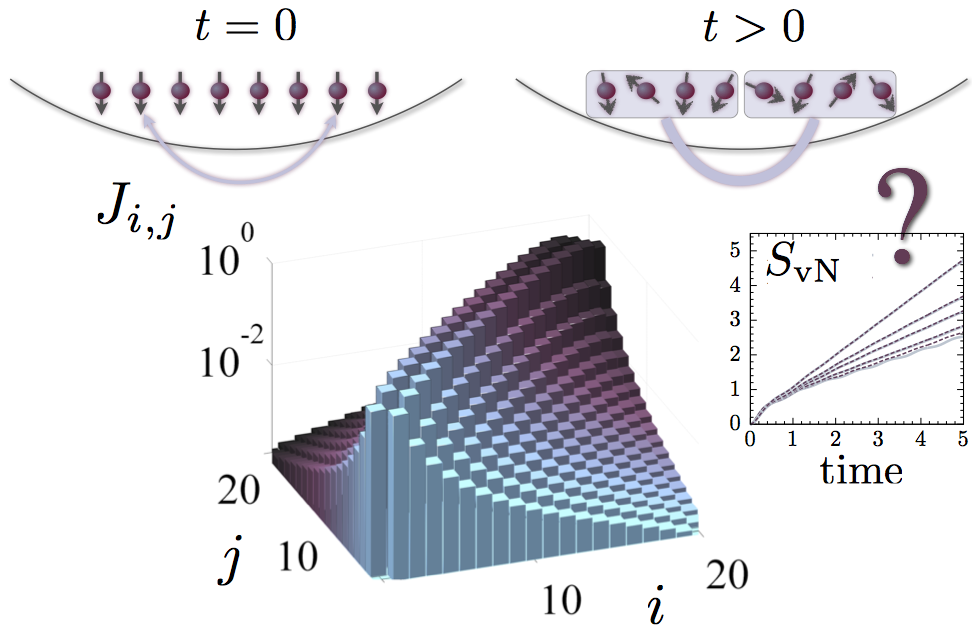Entanglement growth in ion chains - quench dynamics with variable range interactions
Advances in experiments with atomic, molecular, and optical systems have made it possible to realize quantum simulators - experiments that are so microscopically well understood that they can be used to simulate properties of strongly interacting many-body quantum systems that are difficult to calculate on classical computers. One emerging line of investigation explores out-of-equilibrium dynamics generated in a quantum "quench", where one system parameter (e.g., the interaction strength) is suddenly changed. Most such investigations so far have involved short-range interactions, but systems of trapped ions now allow the experimental realization of spin models with a controllable interaction range, promising a new vista of quantum phenomena. Keeping pace with these state-of-the-art experiments, we have investigated theoretically the nonequilibrium dynamics after a quantum quench in such systems and report predictions of very different characteristics of their quantum dynamics depending on the range of the interactions.

The system we investigate is a linear chain of trapped ions, which can be effectively modeled as an interacting quantum spin chain. The range of the interaction, which decays approximately algebraically as a function of the distance r between the ions in the chain, is treated as a control variable, reflecting the current experimental capability. We find the counterintuitive result that the quantum entanglement between separated blocks in the chain grows in time much faster in cases of shorter-range interactions (decaying faster than 1/r) than in cases of longer-range interactions (decaying slower than 1/r). The reason, as we have revealed, lies in the fundamentally different dynamics in these two cases: For shorter-range interactions, the dynamics involves local production of quasiparticle excitations that propagate through the system, and for longer-range interactions, the dynamics is dominated by direct spin-spin interactions. This difference is fundamentally interesting and is also important. In particular, the dynamics with longer-range interactions studied here can actually be easier to simulate on a classical computer using current techniques than those generated by the shorter-range interactions. In this sense, our work can act as a guide for generating large-scale entanglement in these experiments, providing necessary conditions to explore regimes that might go beyond what is possible with current numerical techniques.